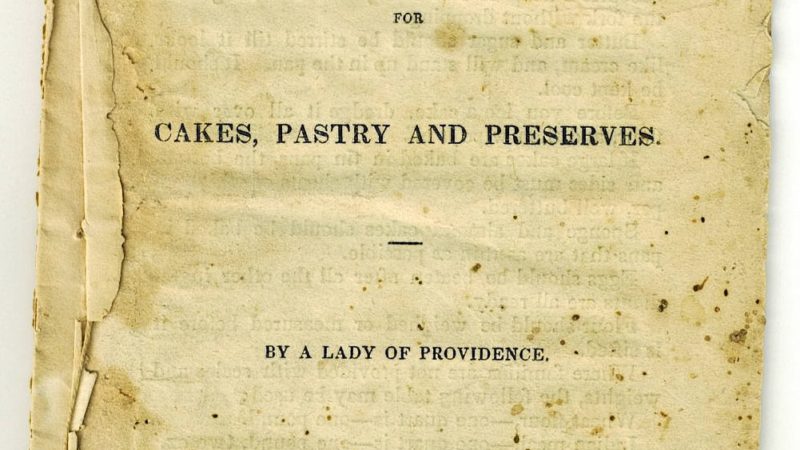
I am an avid watcher of The Great British Bake Off on PBS. My sister reads a few British newspapers daily and knows the winner of the season airing on PBS now, as it has already aired in the UK, and keeps threatening to tell me. It turns out that Our Cooking (from) the Books project at RIHS is just a home version of the Bake Off ‘Technical Bake’. You pick a recipe, you make it not really knowing what it is going to come out like and knowing that your co-workers, friends and RIHS patrons will be judging you.
The upcoming Fourth of July holiday always makes me think of strawberry shortcake. My family would often have sponge cake or angle food cake instead of shortcakes or biscuits with our strawberries. My best laid weekend plans with a 1-year-old child are often not achieved as planned. This is even more true when said child is teething. My plan to go strawberry picking with my husband and daughter this weekend and make sponge cake with strawberry jelly from the cookbook I picked out from our collection was derailed by weather, teething, napping and/or the lack thereof, an out of town visitor and a very inviting kid pool in the back yard that actually fits a grown up laying down in a foot of water.
Sans strawberries, I did make the sponge cake ‘One Hundred Receipts, Cake, Pastry and Preserves’ By a Lady of Providence, 1841…or did I?
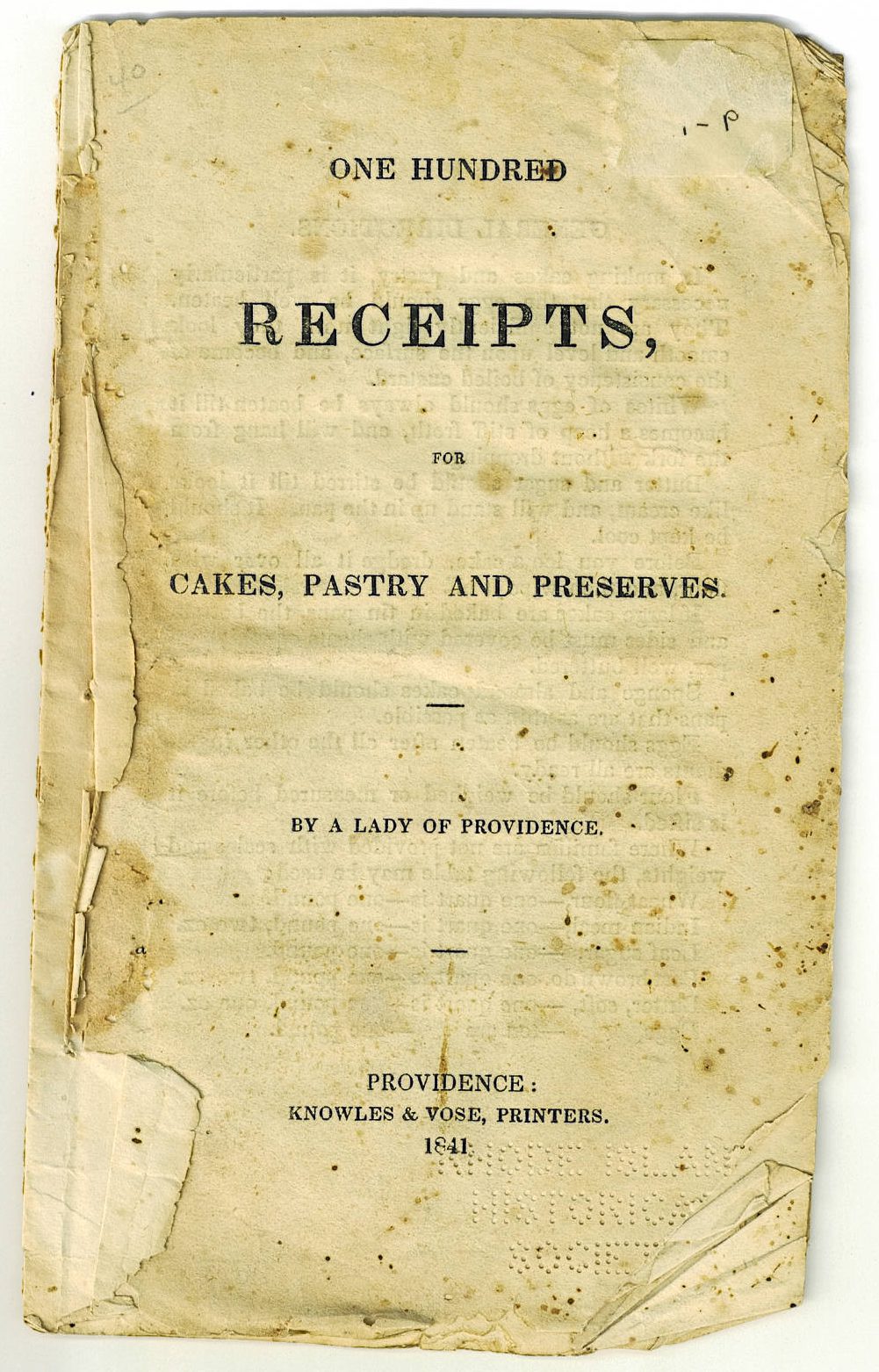
Here is the sponge cake receipt I chose:
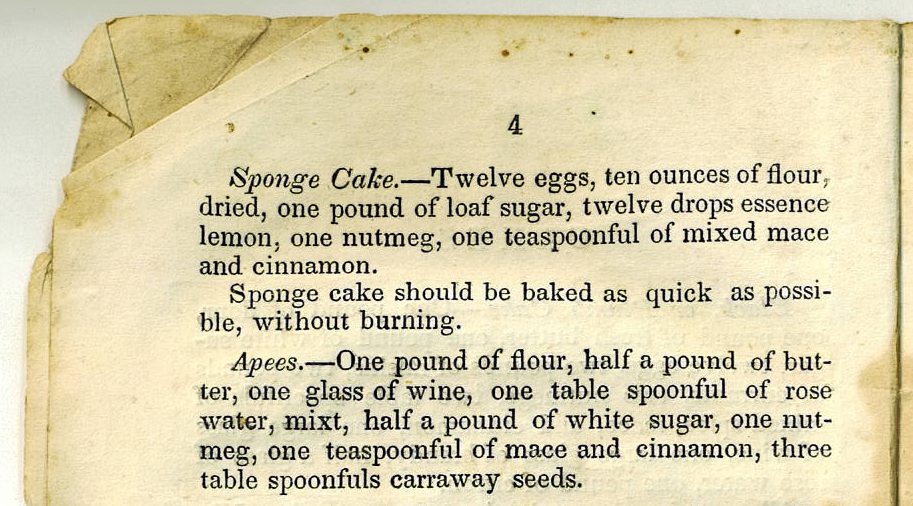
Sponge Cake.-Twelve eggs, ten ounces of flour, dried, one pound of loaf sugar, twelve drops essence lemon, one nutmeg, one teaspoonful of mixed mace and cinnamon. Sponge cake should be baked as quick as possible without burning.
That is the whole recipe. That’s it. Nothing more. The next receipt is for Apees (which I thought was a cookie and not a cake so I didn’t make that one) and has even less instruction.
There was additional information to be had in the General Directions on page 2:
In making cakes and pastry, it is particularly necessary that the eggs should be well beaten. They are not sufficiently light until they look smooth and level upon the surface, and become of the consistency of boiled custard.
Whites of eggs should always be beaten till it becomes a heap of stiff froth, and will hang from the fork without dropping.
Butter and sugar should be stirred till it looks like cream, and will stand up in the pan. It should be kept cool.
Before you ice a cake, dredge it all over with flour, and then wipe it off.
If large cakes are baked in tin pans, the bottom and sides must be covered with sheets of white paper, well buttered.
Sponge and almond cakes should be baking in pans that are as thin as possible.
Eggs should be beaten after all the other ingredients are all ready.
Flour should be weighted or measured before it is sifted.
Where families are not provided with scales and weights, the following table may be used:
Wheat flour, – one quart is – one pound.
Indian meal, – one quart is – one pound, two oz.
Loaf sugar, – one quart is – one pound.
Beet, brown do. – one quart is – one pound, two oz.
Butter, soft – one quart is – one pound, one oz.
Eggs, – ten are – one pound.
So armed with this information I had to make a couple decisions about the recipe:
- ‘twelve eggs.’ I used large eggs. I went with beating them together until like ‘boiled custard’ as per the General Directions, since in other recipes she specifies white separately and didn’t here. Not knowing what boiled custard is like, I beat them until doubled in size and were wobbly but smooth on top:
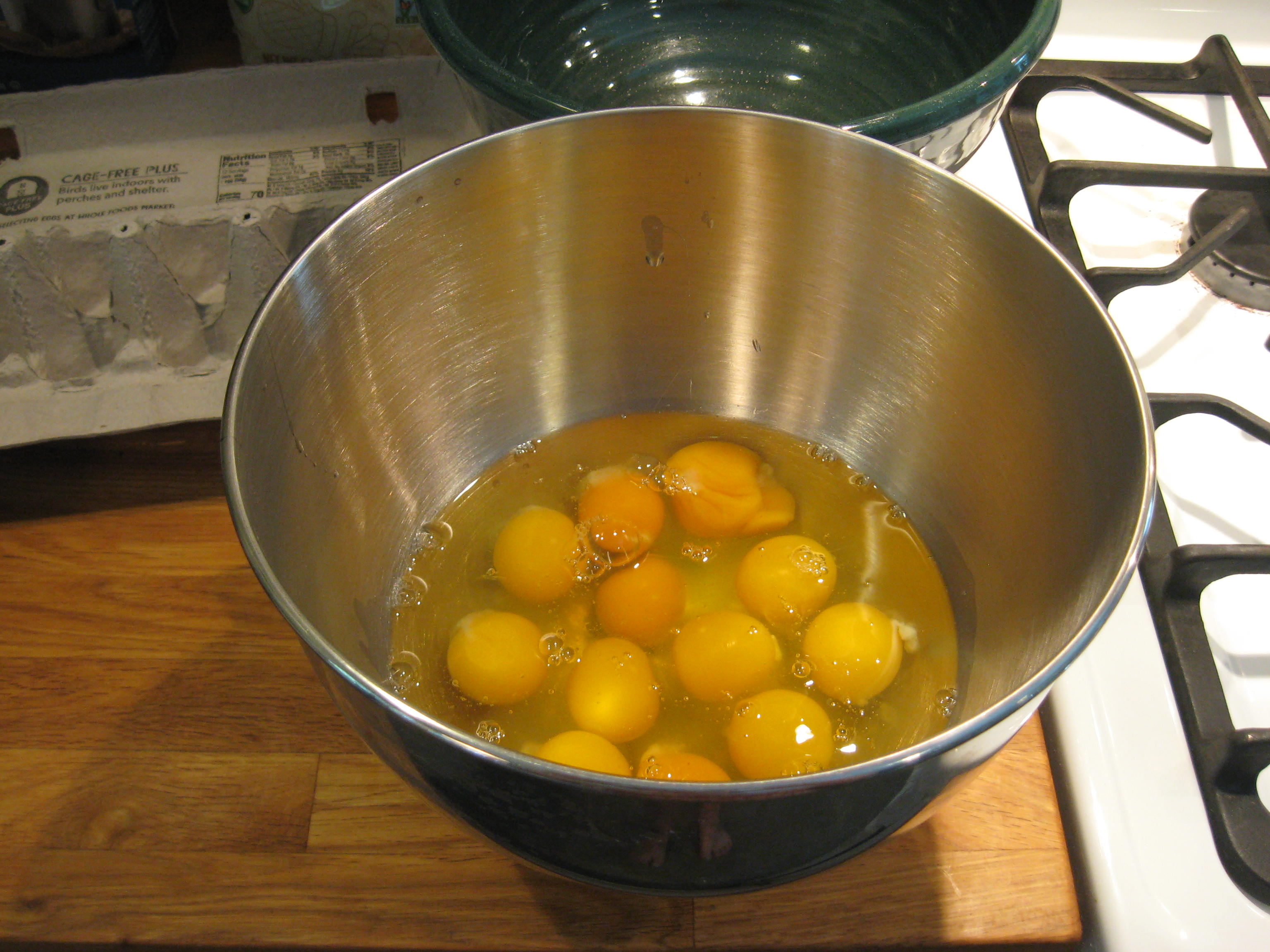
Twelve Eggs
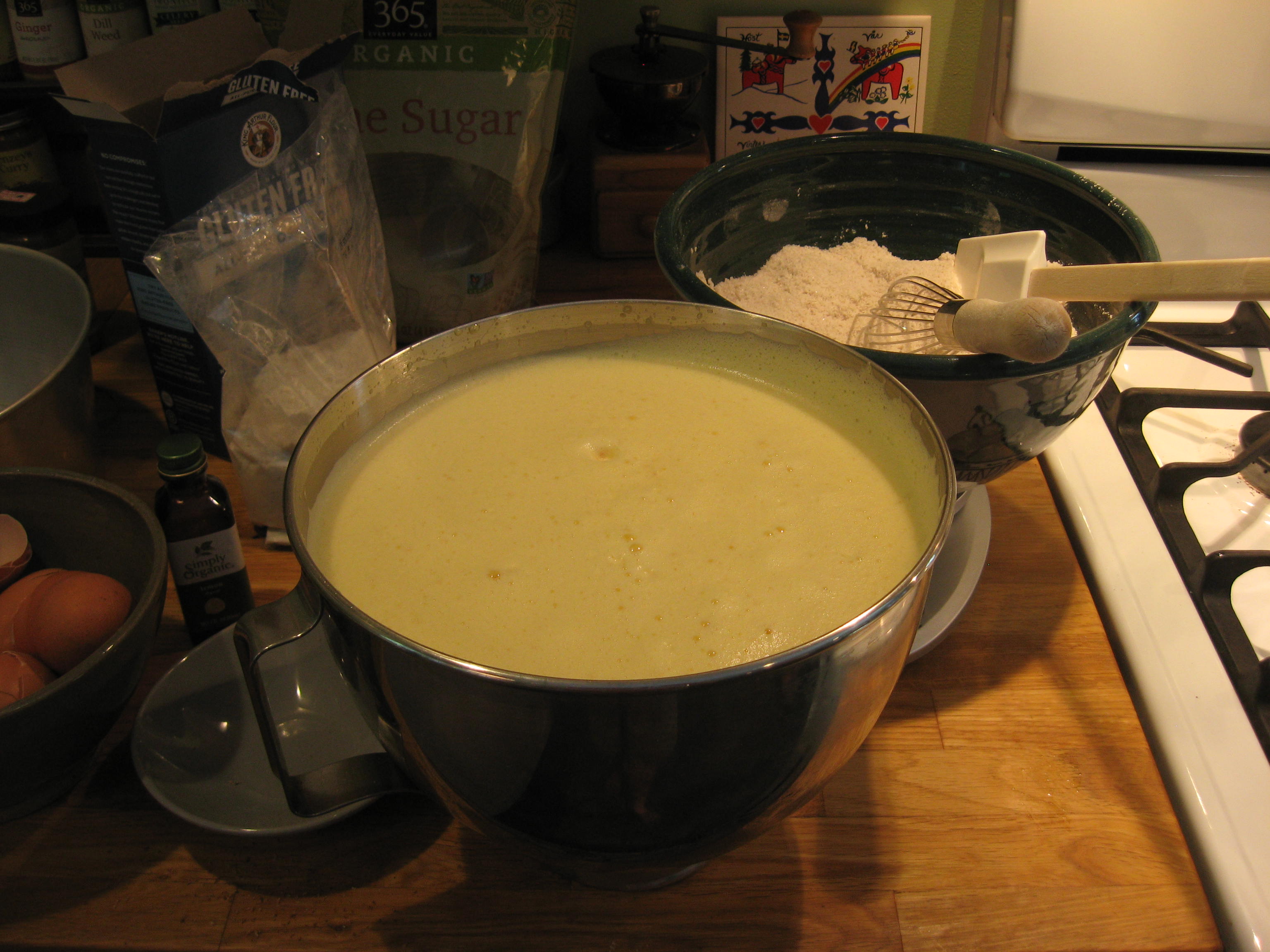
Like boiled custard…?! - ‘Flour, dried’ I could not figure out what this meant. In some brief research all I could find was drying flour for chemical testing in a vacuum oven. Not having one of those on hand, I went with ten ounces sifted gluten free flour blend. To this I added 1 teaspoon xantham gum to make it behave like regular flour, I have celiac so no regular flour for me and this combination has always performed well.
- ‘One pound of loaf sugar’!! Which according to the general directions is a quart (which is a liquid measure today) equal to four cups. I used cane sugar and weighed it out. It was nearly four cups. I used two cups – fearing burnt sugar on the surface of the sponge, the difference between loaf sugar and cane sugar weight to volume was probably different, and a cake that was too sweet. (Perhaps this is where I went wrong…)
- ‘One nutmeg’. A whole nutmeg? I was worried at first, but I grated a whole one until I couldn’t hold on to what was left. It turned out to be two teaspoons of fluffy gratings. So all that went into the dry ingredients.
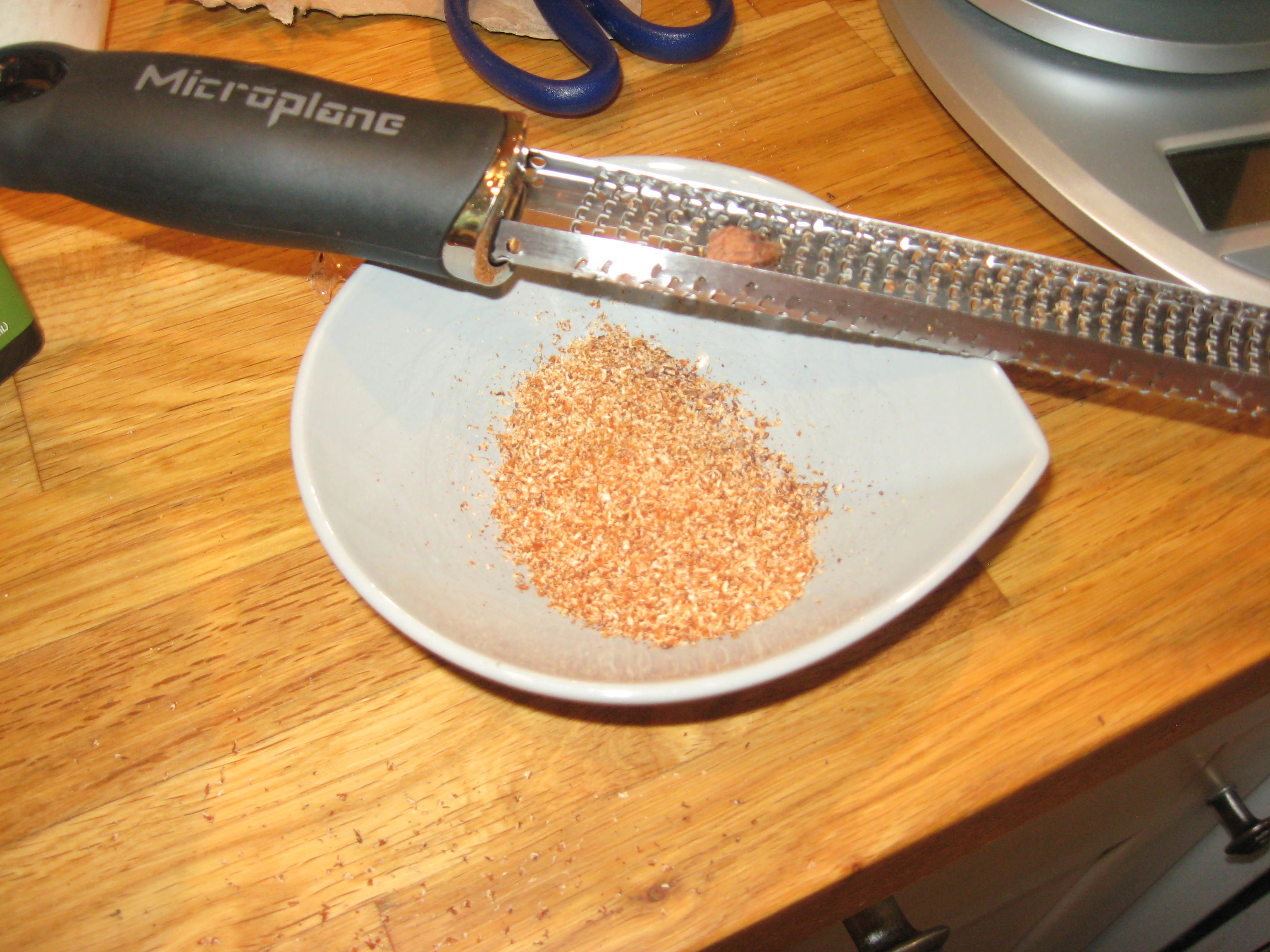
One nutmeg. - ‘Baked as quick as possible’. My friend Michelle has already determined that a ‘slow oven’ is about 250 degrees Fahrenheit. I did a bit of searching and came up with 400 degrees Fahrenheit to be a ‘quick oven’.
- Since no mention of size or shape of pan was mentioned I used my mother’s aluminum angel food cake pan. It is thin, it has tall sides for the mixture to stick to so that it keeps the height set up by the eggs. (I don’t have any memories of her using this pan, and now I think I understand why. We spent a lot of time outside as kids and not in the kitchen, just like my daughter, husband and I do now.)
I measured, grated, whipped, sifted, folded eggs into dry ingredients, then and then with my husbands help to hold my biggest bowl, poured the mixture into the angel food cake pan. Into the 400 degree oven it went for 20 minutes.
Was any of that correct?
Did it come out golden brown and delicious?
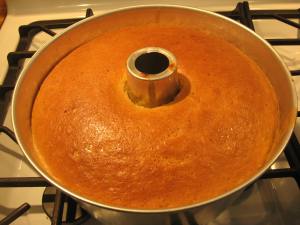
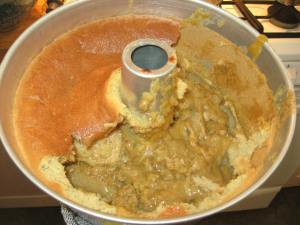
So, what does a Rhode Island mother/experimental historical baker do when her sponge is not a sponge?
After a moment of total cake devastation, I poured the very hot raw insides into yet another bowl, whisked it up, poured it into two round cake tins, and whacked it back in the oven at 300 for 15 minutes. That was a whole dozen eggs in that sponge, we had to eat it somehow.
And voila! A sponge that is not a sponge but a flat, moist, spiced, Blondie/gingerbread with no ginger.
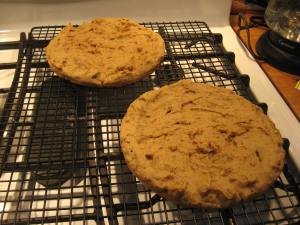
~ Dana Munroe, Registrar
